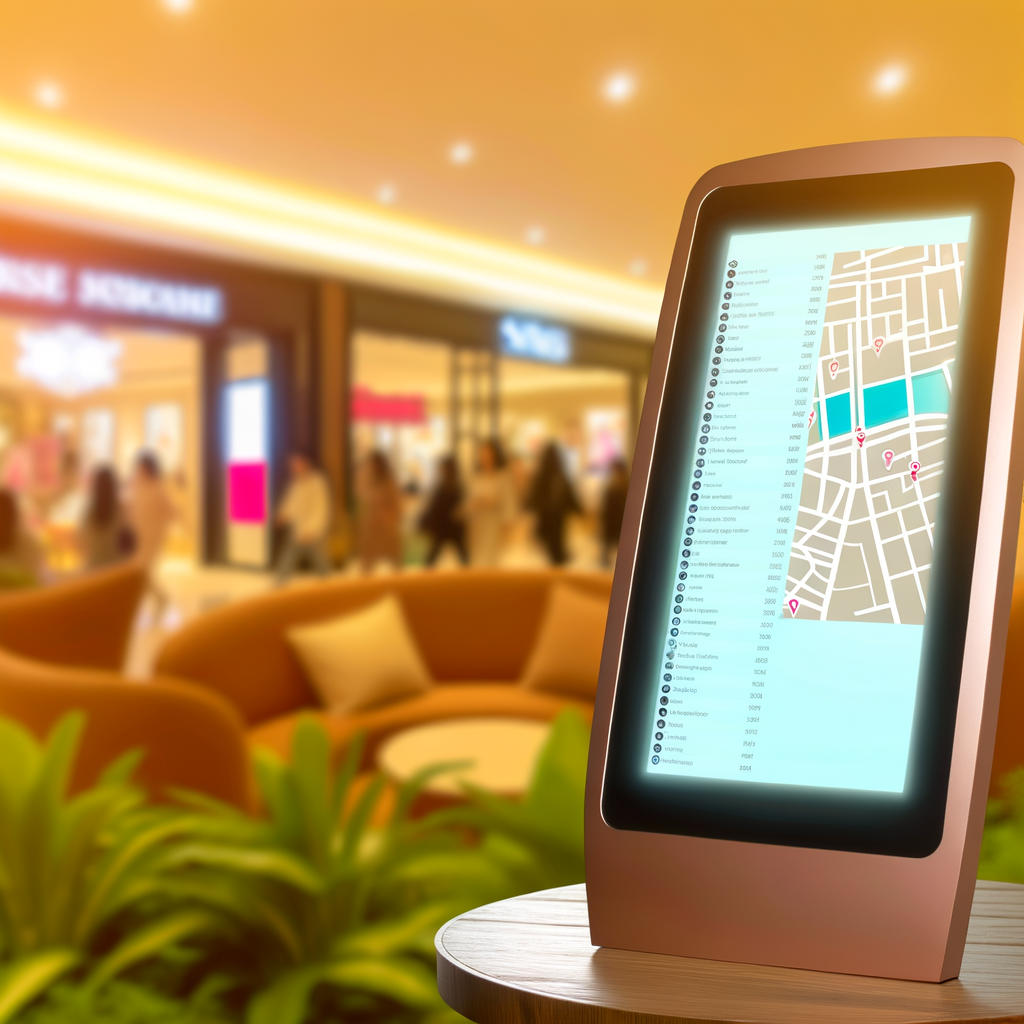Imagine walking into a vast shopping mall. In the past, you might have relied on a paper-based map or perhaps asked a friendly mall employee for directions. Now, think of stepping into that same space, but this time, you’re greeted by an interactive digital directory. Sleek, modern, and user-friendly, it’s a tool that harnesses the power of technology to deliver a richer, more engaging shopping experience. For customers, this means easy navigation, personalized shopping suggestions, and perhaps even exclusive deals. For businesses, it signals endless opportunities to capture attention and drive sales.
For eSignage and electronic kiosk companies, digital mall directories represent a dynamic canvas for innovation. They’re not just a navigation tool; they’re a platform for interactive marketing, up-to-the-minute communication, and personalized shopper engagement. By integrating advanced technologies such as augmented reality, AI, and real-time data analytics, you can elevate a simple shopping trip into an immersive experience. Think about it—you can offer shoppers tailored promotions based on their preferences or behaviors, ultimately enhancing customer satisfaction and loyalty. It’s your chance to not only transform the physical landscape of retail but also redefine how shops connect with their audiences.
Shopping plaza owners and mall managers, on the other hand, have much to gain in terms of operational efficiency and customer insight. Digital mall directories are not just about guiding the customer but also gathering valuable data. By analyzing how shoppers interact with these directories—what they’re searching for, which stores they visit, how long they stay—you can derive insights that drive strategic decisions. Is a section of the mall underperforming? Do certain products receive more inquiries than others? These insights can inform everything from leasing decisions to marketing strategies.
Moreover, in a world where health and safety have taken center stage, digital directories offer a contactless and hygienic solution that’s both safe and effective. Shoppers can navigate the mall confidently, reducing the need for physical maps or interactions, boosting both customer and staff safety.
The practical implications of adopting digital directories are manifold. You can reduce operational costs by minimizing the need for printed materials and traditional signage. Also, by providing a platform that’s easy to update, you can quickly adapt to changes such as new store openings, special events, or sales—keeping your mall’s ecosystem dynamic and up-to-date with minimal effort.
Ultimately, digital mall directories are about enhancing the experience—for everyone involved. For shoppers, it’s about convenience and a personalized touch. For businesses, it’s about staying competitive and maximizing engagement. And for mall owners and managers, it’s about gaining insights, driving efficiencies, and creating an environment that shoppers can’t wait to visit again.
In conclusion, digital mall directories aren’t just a trend; they’re a revolution in how we visualize and experience shopping spaces. They bring about a host of benefits that improve operations, increase customer satisfaction, and ultimately drive sales. As we move forward, embracing this technology will be key to staying relevant in an ever-evolving retail landscape. So, whether you’re in signage, kiosks, or mall management, it’s time to think digital—because the future of retail is here, and it’s more exciting than ever.




